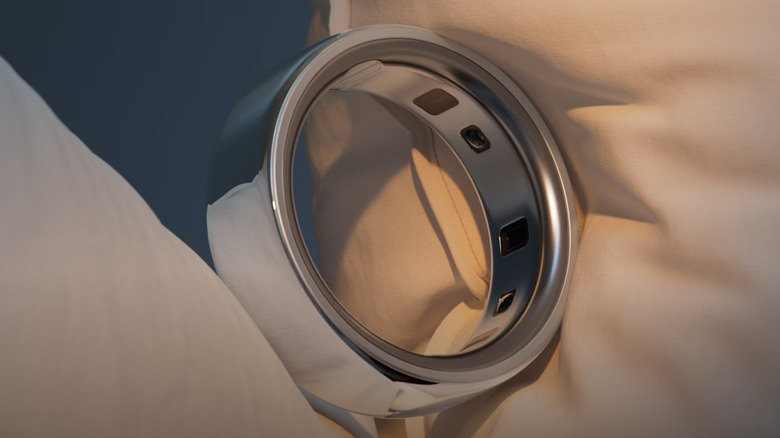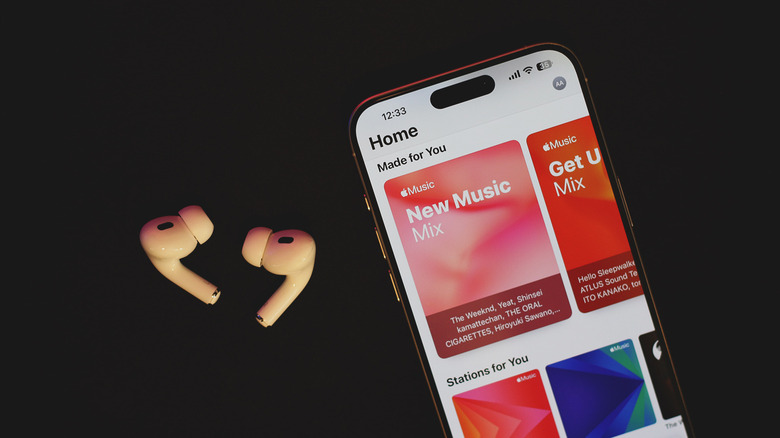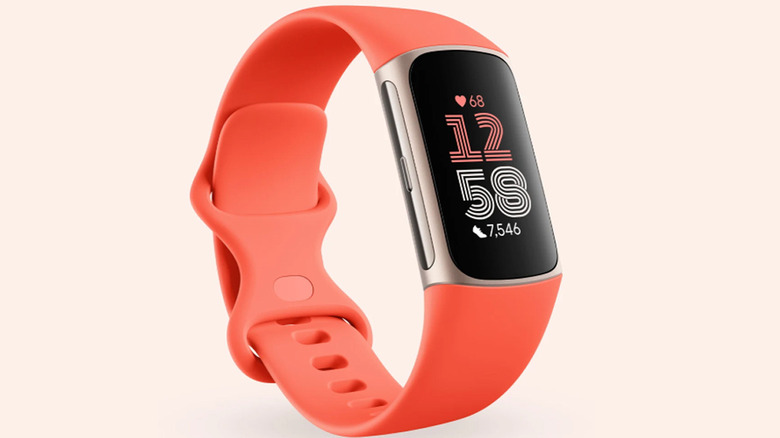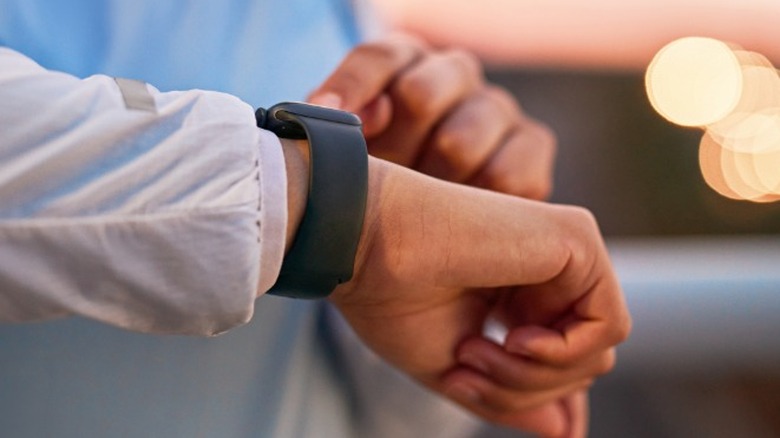Many claim we’ve reached the pinnacle of the smartphone — which could be why every other release on the market looks similar and offers the same set of features. Smartwatches, though a relatively newer product category, have become quite mainstream too. They often act as extensions of our phones and deliver notifications, help with navigation, or even let us take or place calls on the go.
Major smartwatch brands have also made fitness tracking a lot easier, with some of the best offerings, like the Apple Watch Series 10, capable of monitoring ECG and blood oxygen levels. Having so many options to wear on your wrist is great, but what if you’re looking for a different kind of wearable? Perhaps you’ve grown tired of looking at yet another screen, or you’re looking forward to testing one of the more exciting products around, like a smart ring or a pair of AI-powered glasses.
We have curated a list of some popular and highly rated wearable devices that aren’t smartwatches. You can find out more about our methodology and how we’ve picked these products near the end of this read.
Whoop 4.0
If you’re tired of having to deal with screens everywhere, the Whoop 4.0 is a perfect accessory that simply wraps itself around your wrist and syncs data with the mobile app. It comes with a battery pack that tops up the Whoop strap wirelessly and, in turn, uses a USB port to charge. The Whoop 4.0 comes with a slew of sensors that let it track measurements like heart rate, blood oxygen levels, and skin temperature.
Owing to its unobtrusive design, Whoop happens to be one of the best sleep tracking devices you can purchase as well. It tracks all four stages of your sleep, and gives every nap an overall performance score. A good chunk of Whoop’s health tracking is focused on recovery, where it tracks statistics like your resting heart rate.
Unfortunately, the Whoop experience works on a recurring membership model, which explains the low initial cost of ownership. There are a few options to choose from, with the monthly subscription priced at $30 a month for at least 12 months. There are a lot of satisfied users, but there are other Whoop alternatives if a subscription-based model is not something you prefer. TechRadar gave the Whoop 4.0 a score of 4/5 stars, highlighting its capabilities in health tracking and comfort. Still, without a screen, this is not a wearable for everyone and might take some getting used to.
Oura Ring 4
The Oura Ring 4 is a wearable device that goes on your finger, and brings a similar suite of health and sleep tracking features as many smartwatches and fitness bands. It is one of the smallest and least assuming ways to keep track of your health data. The ring comes with a titanium build with no visible engravings on its exterior. All of the sensors are neatly packed on its inner side, and track your heart rate, blood oxygen levels, and respiration rate.
You get a few different colors and finishes to choose from, with a starting price of $349. Oura claims a battery life of up to eight days on a full charge, with subsequent top-ups taking a little over an hour with the included charging cradle. All of your metrics are made available on the companion app that can be downloaded on both Android and iOS devices.
You can opt in for a sizing kit to be delivered to your doorstep free of charge if you aren’t certain about your ring size — and then place an order for the actual wearable later. The Oura Ring 4 earned a full five stars in a comprehensive review carried out by Tom’s Guide, which isn’t surprising since it is manufactured by one of the highest-ranked smart ring brands.
Ray-Ban Meta Smart Glasses
Unfortunately, part of the reason why Google Glass turned out to be a flop was the fact that it was released way ahead of its time. Consumers have now slowly started accepting different kinds of wearable devices, including smart glasses. We’ve had entries from Snapchat, XReal, and Viture — each offering a slightly different take on the whole “computer on your face” thing. Starting at $299, the Ray-Ban Meta smart glasses allow you to take photos or videos, start livestreams, listen to music, or take calls.
They also come with Meta AI, which you can use to ask general questions and receive verbal replies through the open-ear speakers. There is a dedicated capture button on the frame, as well as a touchpad that registers tap and swipe gestures. The glasses do come with a few privacy-focused features, including a physical power-off switch. The Capture LED shines bright to let people know when the glasses start recording, too.
Unlike some of the smart glasses that have actually rolled out to the masses, the Ray-Ban Meta glasses are lightweight and comfortable to wear all day, according to Digital Trends — where it also earned a score of 4.5/5 stars.
AirPods Pro 2
Wireless earphones don’t pop into our minds when we think about wearable technology — but they fit every definition of the term. Apple’s AirPods Pro 2 are still one of the best truly wireless earbud sets you can purchase, and with updates, they only seem to get better. Not only do you get some of the best noise cancellation in the industry, but the AirPods come with the added advantage of being part of the Apple ecosystem.
If you own an iPhone, Mac, or iPad, very few accessories deliver an experience like Apple’s own first-party ones do. Connection is instantaneous, and the AirPods intelligently switch between devices that you’re using. The Pro variants come with features like Spatial Audio, which simulates a surround sound experience, complete with head tracking. You also get transparency and adaptive audio modes, allowing in certain sounds from your surroundings, while suppressing noise.
Apple has started bringing a lot of accessibility features to its audio products, like Live Listen, that amplifies audio in a room, or the ability to add background sounds. In more recent updates, AirPods Pro can function as hearing aids – making them a genuinely useful wearable accessory that doubles not just as an audio product, but also as a tool geared towards people with hearing difficulties. AirPods Pro 2 retail at $249, and have earned a score of 9/10 in our review.
Fitbit Charge 6
Circling back to more traditional wearable accessories that aren’t full-blown smartwatches, we have the Fitbit Charge 6. It does have a screen, unlike the Whoop band, but does a good job of not being as distracting or flashy as a smartwatch. Now that Google owns Fitbit, the app has been refreshed with a familiar user interface, and the Fitbit Charge 6 has seamless integrations with services like Gmail, Google Calendar, and Google Maps.
Specs-wise, the Fitbit Charge 6 sports an AMOLED display and comes with a variety of sensors, including an optical heart rate monitor, an accelerometer, a device temperature sensor, and red and infrared sensors that help with blood oxygen monitoring. The Charge 6 comes with silicone bands of two sizes, which make it lightweight to wear during workouts. Highlighting the Google integration — you can listen to songs through YouTube Music, get turn-by-turn directions on Google Maps, and even link the fitness band to compatible equipment at the gym to view your statistics on a bigger screen.
Google promises up to seven days of battery life on a single charge, which is a welcome improvement compared to the shorter endurance of true smartwatches. While you get six months of access to Fitbit Premium, you will have to shell out extra if you wish to make the most out of your Fitbit. The Fitbit Charge 6 costs $159 and earned a score of 4.5/5 stars in PCMag’s review.
How we selected products for this list
With companies venturing into different kinds of wearables, consumers now have a decent list of options to choose from. Evaluating the performance and efficiency of a wearable device takes rigorous testing, which is why we’ve cherry-picked devices on this list based on reviews carried out by trustworthy sources like PCMag, TechRadar, Digital Trends, and Tom’s Guide.
We, at SlashGear, also review an assortment of devices and take into consideration varying aspects such as performance, battery life, ease of use, and the overall value proposition of a product before recommending it to our readers.
Source: http://www.slashgear.com/1753064/wearable-smart-devices-not-watches/
 smartwatch
smartwatch







